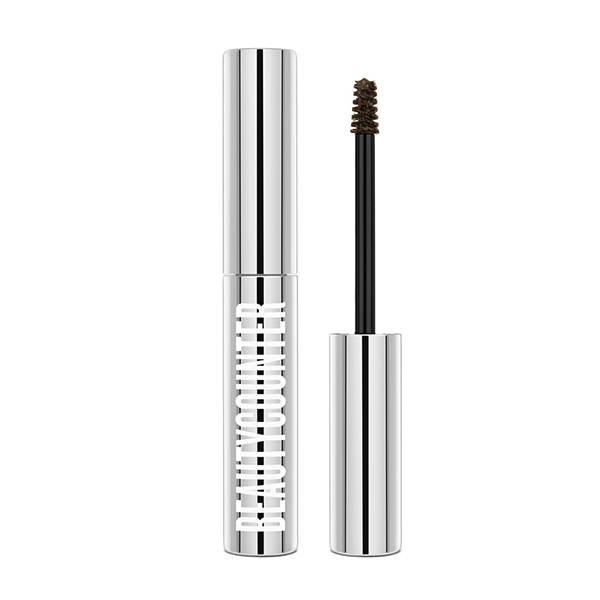How to Make the Switch to Non-Toxic Makeup (+ Why You Need to Do It)
Denise Vasi
Clean beauty is an industry that’s growing by leaps and bounds every year as more and more people seek safer alternatives to conventional skincare and cosmetics. As your body’s largest organ, your skin readily absorbs everything you put on it, good or bad—and the chemicals from these products accumulate in your body over time. That’s why, for the last several years, I’ve been so passionate about switching to non-toxic makeup products.
Here’s the ugly truth: the beauty industry has very little oversight from the Food and Drug Administration (FDA), so it’s mostly self-regulated. This means we need to trust that makeup manufacturers are doing right by us because no one is monitoring their products for safety. There are ingredients in your makeup that are known to cause cancer and disrupt hormones, but as long as consumers continue to buy them, the beauty industry has no incentive to develop safer formulas.
Most of us use multiple products each day, and all of these trace amounts of chemicals add up.


These are just a few of the common chemicals used in conventional beauty products:
- Formaldehyde, a known carcinogen that’s found in nail polish
- Toluene, another chemical in nail polish that is toxic to the nervous system
- Coal tar, a possible carcinogen that’s in some shampoos and hair dyes
- Lead, a neurotoxin that is not safe in any amount, is in many lipsticks
- Parabens and phthalates, two endocrine-disruptors that seem to be in pretty much everything
- Sodium lauryl sulfate, which makes shampoo and body wash lather, but also causes skin irritation
- Asbestos, another known carcinogen


Switching to clean beauty products may feel daunting, but if you approach it as an ongoing process, it will be much more manageable.
How to Make the Switch to Non-Toxic Makeup
It can feel overwhelming to change up all of your products at once. And let’s be real—you spent a lot of money on all of that stuff, and it feels wasteful to toss it in the trash. Here’s the thing, though: you don’t have to do it all at once. You can use up your conventional products or throw them out as they expire and slowly transition to more natural options. This way, the cost of making the switch to non-toxic makeup products doesn’t hit you all at once.
Another way to make the change is to prioritize your most-used products. If you only wear eyeshadow for special occasions, but you wear mascara every single day, switch out your mascara first. Skincare and body care, too, should be on your must-list since those are things we often use—and, as mentioned above, your skin absorbs everything. And don’t forget about non-toxic sunscreen—this isn’t just important for your health, but it’s better for the environment too.
A less-discussed reason to start slowly and make the change in gradual steps is that stepping away from products you’ve known and loved and have loyalty to is hard. Some of us have been using the same brand of mascara since junior high! We get in a good groove with our makeup and skincare, and sometimes switching to clean beauty requires a bit of trial and error, as anyone who’s made the switch to natural deodorant knows very well.
You’ll need to get used to how your new products perform throughout the day; maybe you’ll need extra touch-ups because your foundation is based from jojoba oil now, or you may have to try a few brands of mascara before finding one that doesn’t flake, smudge, or leave you looking like a raccoon by 4 P.M.
Finding the Best Non-Toxic Makeup and Skincare
The Environmental Working Group’s Skin Deep database is a great place to start. Look up your current brands to decide which ones to ditch; then, search any potential replacements there as well. EWG has strict criteria and you can trust products that they have verified. Here are some more pointers:
Lipstick
Lipstick is an easy product to switch because there are a ton of fantastic clean options on the market. Lead in lipstick is pretty scary—and it can be in natural lipstick too. We ingest our lipstick throughout the day, and we kiss our babies with it on our lips, so it’s important to choose a safe brand. Lead-free brands often advertise themselves as such, so do a little digging on their websites to see if you can find it mentioned in an FAQ or product page. If there’s no mention of lead, it’s likely to be present in the product.
Eye Makeup
The skin around your eyes is some of the thinnest on your body, so it’s going to absorb anything you put on it. Look for eye makeup that is free of parabens, phthalates, and fragrance. (Yes, they put fragrance in eye makeup. Why? Your guess is as good as mine.)
Foundation
It can be really tough to find a foundation that matches your complexion, so this might end up being the last item to get swapped out. In fact, you might be tempted not to change it because finding a clean alternative to your tried-and-true fave may not be so simple—limited shades and coverage can be an issue with non-toxic foundations.
Nail Polish
Back in the day, we looked for 3-free nail polishes, free of formaldehyde, toluene, and dibutyl phthalate. Now, there are 5-free, 7-free, and even 10-free non-toxic nail polishes. If your manicurist doesn’t use non-toxic nail polish, bring your own bottle with you. Conventional nail polish is one of the most toxic beauty products on the market, and since nontoxic formulations perform just as well as conventional, this is an easy switch to make.
Switching to clean beauty products may feel daunting, but if you approach it as an ongoing process, it will be much more manageable. You might even end up being surprised to find some new favorite products.















